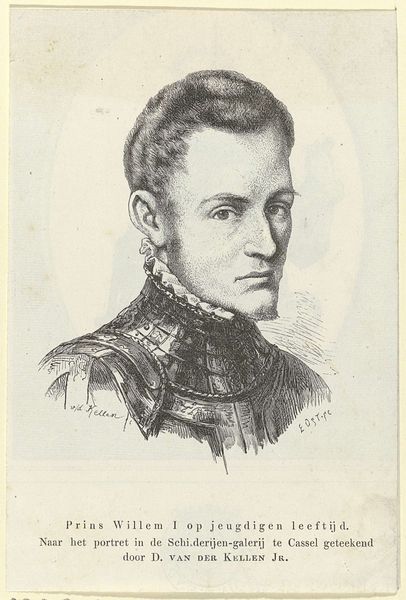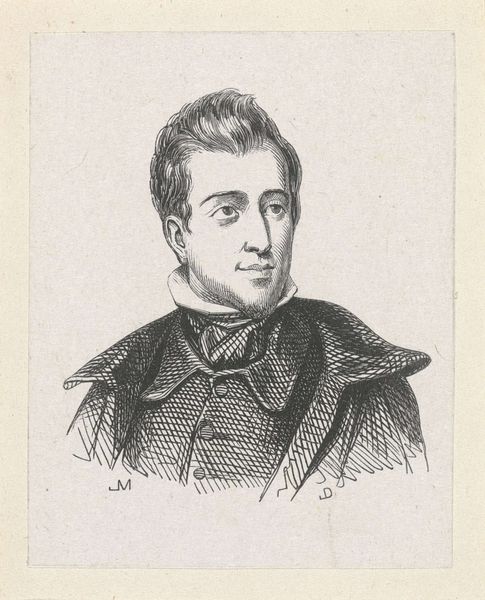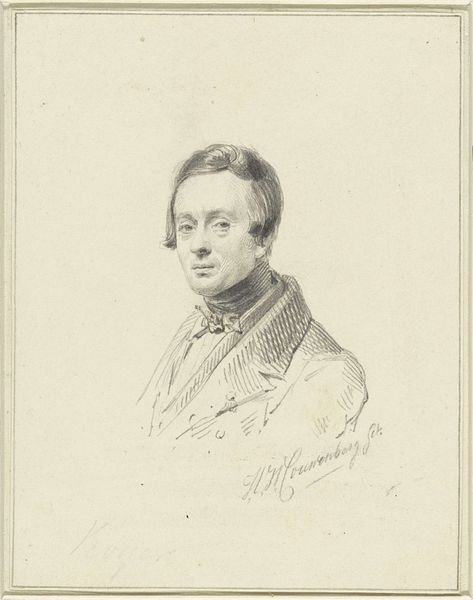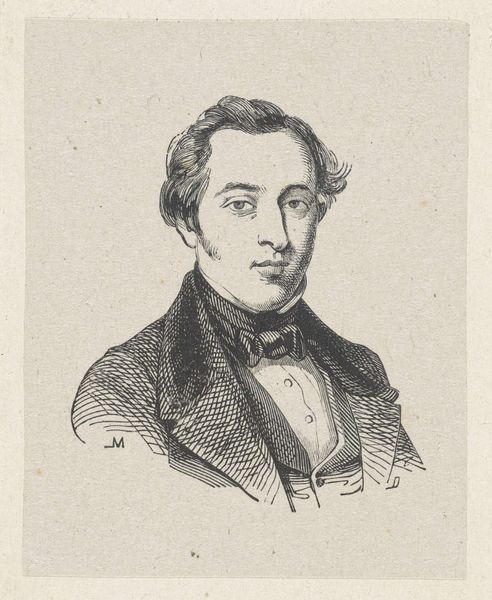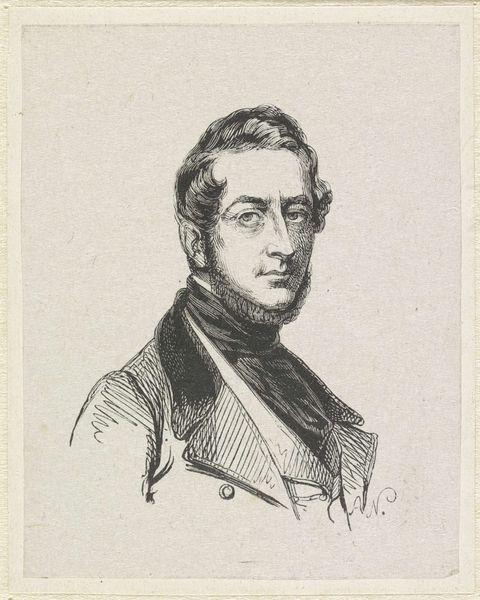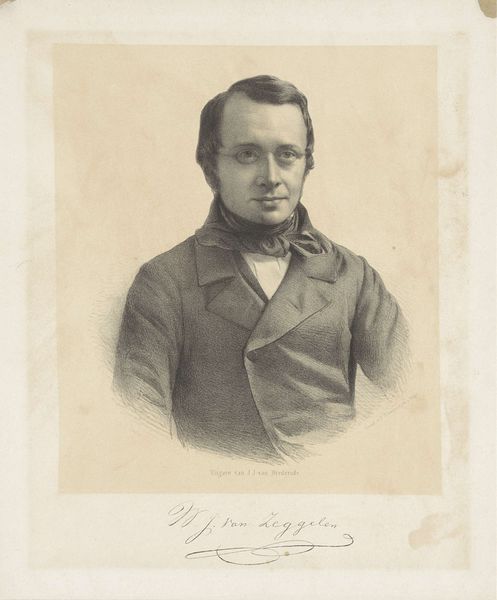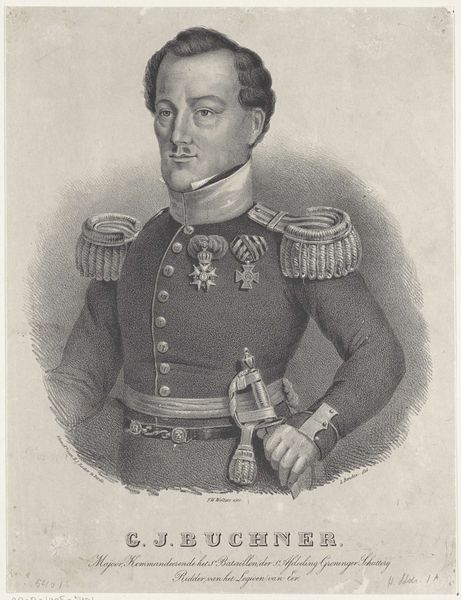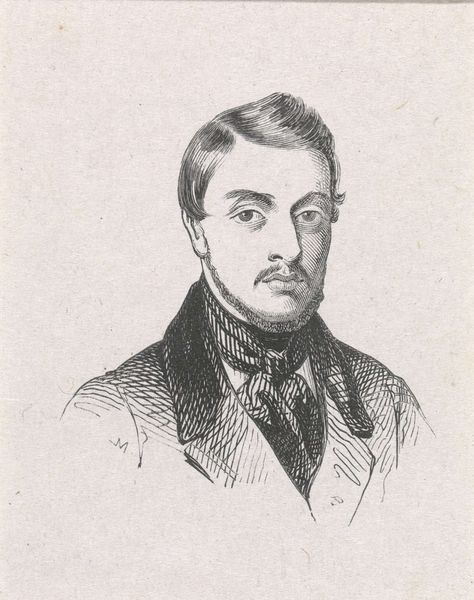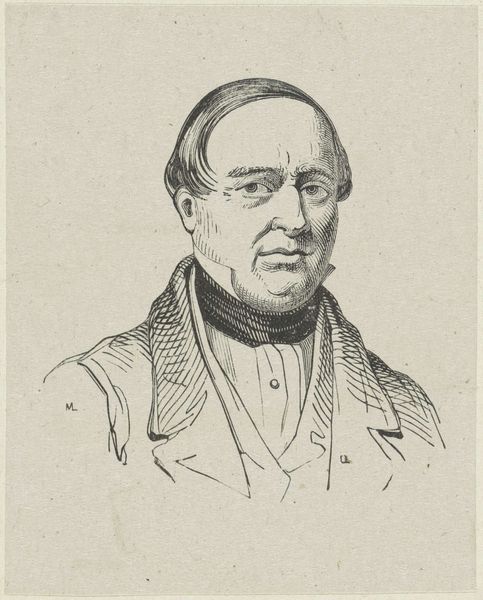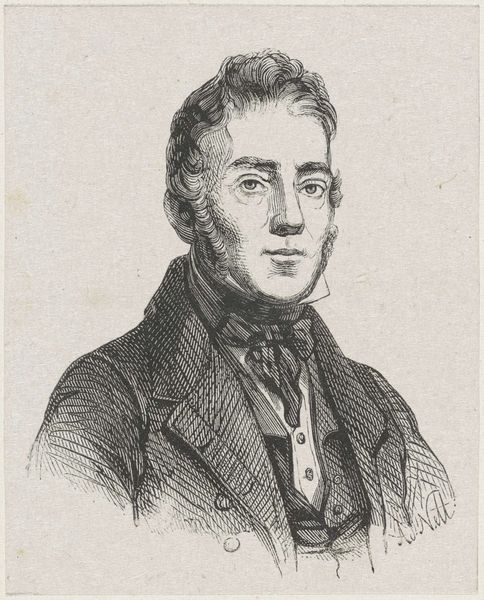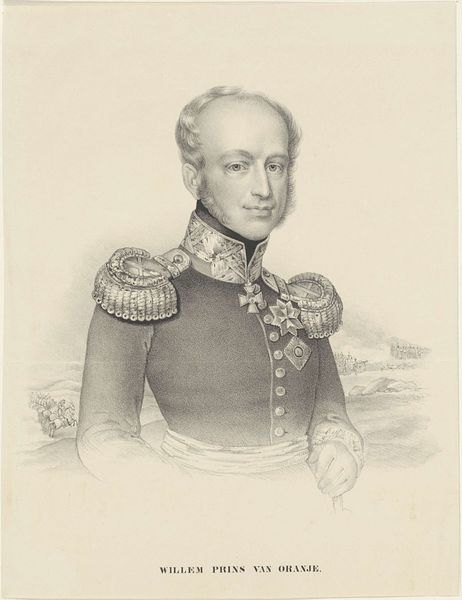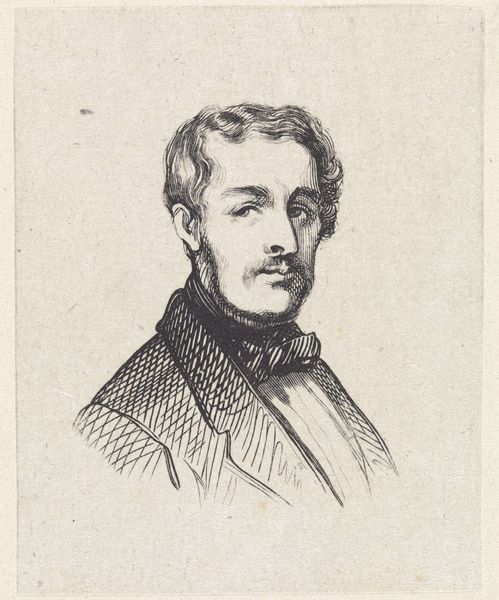
drawing, print, engraving
portrait
pencil drawn
drawing
pencil drawing
portrait drawing
engraving
Dimensions: height 66 mm, width 55 mm
Copyright: Rijks Museum: Open Domain
Curator: Here we have "Portret van Louis Royer," an engraving from the 19th century, its maker known only by the initials M.L. The work is housed here at the Rijksmuseum. Editor: There's an incredible stillness to this portrait. The subject has very intense eyes, and the lines of the engraving, although delicate, create quite a serious mood. Curator: Well, consider the historical context. Louis Royer was a significant sculptor in his time, known for his contributions to the neoclassical movement. It's a portrait that really speaks to ideas surrounding status and intellectualism in 19th century Dutch society. The work has this tension; you see the precision of the line, but there’s a softening in his face. He's someone deemed worthy of the historical record and memory. Editor: I see it also in the material choices – the decision to render him in an engraving, suggesting reproducibility, which inherently makes him, or the idea of him, more accessible. An engraving speaks to me of craft, labour, and, fundamentally, the printing press. How are those factors implicated? Curator: The material suggests that image becomes widespread, even if he remains among an elite of male Dutch artists deemed important and skillful, and also, that he must circulate within the Dutch art scene through reproductions in this way. A modern viewer has a different experience, looking back into this closed artistic circle. Editor: So, what about the process of making prints itself? Curator: The artistry resides in the way the artist manipulates light and shadow to suggest volume and depth on a flat surface. These types of printed portrait can democratize and commodify an individual's image in a way. Yet at the same time, there is clear labor involved in crafting the work – so, you can see labor as a political factor for accessibility but one should consider the person represented, Royer. He gains a lasting memorial due to social conditions that support the creation of portraiture. Editor: It’s a thought-provoking image, especially now, prompting one to consider how we assign worth through art. Curator: Exactly. This portrait raises some questions about permanence, the means of production, and accessibility. It captures an epoch obsessed with likeness and commemoration, yet with social stratifications ever apparent.
Comments
No comments
Be the first to comment and join the conversation on the ultimate creative platform.
